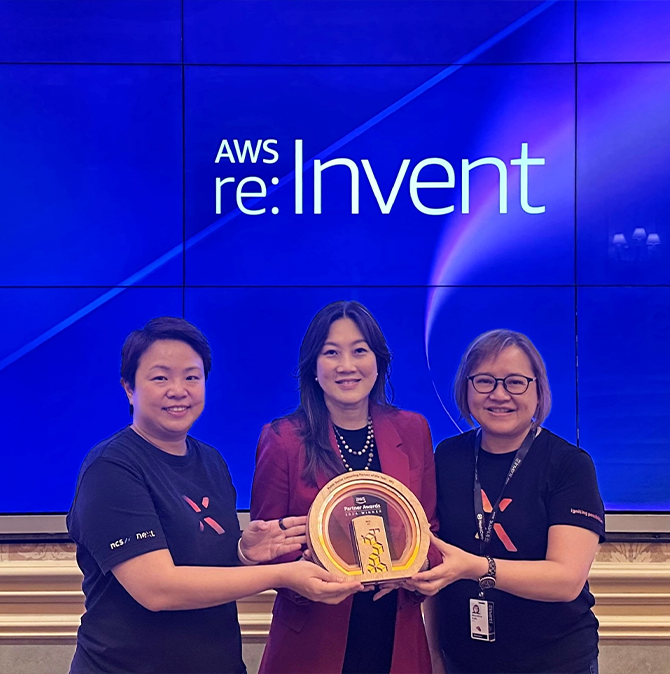Published: Apr 04, 2025
From business as usual to business as disrupted: The case for embracing change
The reality is that many organisations still operate as if stability is the goal, shaped by rigid structures, incremental improvements, and risk-averse mindsets that create a sense of safety.
The problem? Disruption isn't an issue to contain until the storm passes – it's the new normal.
With the pace of technology, market, and regulatory shifts accelerating, the organisations that thrive don’t just react to change. They embrace it as an opportunity. They understand that business as usual means business as disrupted. That's why they build adaptability into their culture, leadership, and operations.
The real question isn't whether change will happen. It's whether your organisation is built to move with it.
Disruption is an opportunity, not an obstacle
Many organisations treat change like an endless game of catch-up. They frame digital transformation as a series of projects, each designed to keep them relevant or to 'fix' the latest challenge. But this approach is flawed.
There is no end state – disruption is ongoing, not a one-time event. Just think about the current rate of disruption – climate, political, competitive – that continues to increase at a rapid pace.
Siloed data, legacy infrastructure, cybersecurity risks, and talent shortages are all symptoms of a deeper issue: businesses designed for stability, not agility. If your strategy and culture are built around maintaining the status quo, the adoption of new tools will be unlikely to help you lead.
Continuous adaptability as a growth strategy
Organisations have been on the digital 'transformation treadmill' for years, with no end in sight. How do we build something more sustainable? The answer lies in the realisation that adaptability isn’t about reacting to a point issue.
Continuous adaptability means building systems, processes, and mindsets that allow you to pivot as new opportunities and challenges emerge.
What is continuous adaptability?
If adaptability is adjusting to new conditions, then continuous adaptability can be defined as the capability to evolve – intentionally and repeatedly – by embedding agility into culture, leadership, and operations. It means:
- Fostering an innovation-first mindset
- Moving from rigid long-term planning to dynamic, scenario-based approaches
- Leveraging technology strategically (technology should enable adaptability, not trigger it)
Technology doesn’t matter. Rethinking innovation does
Technology is no longer a fixed asset - it's an enabler. Instead of being the end goal, it serves as a dynamic, temporary advantage that is constantly challenged and disrupted. Technology is now simply part of our lives and has no value if not backed by processes.
A truly adaptable business builds change into its core and leads with innovation. This requires embedding adaptability into culture, leadership and operations.
A culture of experimentation
Encouraging teams to test, iterate, and embrace failure as a learning tool means building a culture where employees are not afraid to experiment, but are empowered to do so. Organisations prioritising a test-and-learn mentality can quickly identify opportunities and refine their approaches in real time.
Adaptive leadership
True adaptability requires leaders who embrace change and recognise that getting too comfortable leads to stagnation. These leaders inspire teams to view uncertainty and ambiguity as part of their day-to-day. Effective leadership strategies include fostering collaboration across departments and ensuring teams are aligned with a shared vision of resilience and growth.
An always-on innovation strategy
Continuous adaptability starts with a strategy that aligns agility and resilience with an organisation’s objectives. Traditional, static strategies no longer work in a world where disruption is constant. Instead, organisations need evolving, 'living' strategies based on real-time data, market shifts, internal learning – and a shift from one-off technology implementations to a continuous innovation model.
By embracing ambiguity, organisations can foster a culture where exploration, agility, and resilience become second nature.
Case study: The future belongs to the adaptable
A recent example of continuous adaptability comes from the Singapore Ministry of Manpower (MOM), which sought to improve its contact centre operations. MOM partnered with NCS to implement a generative AI-enabled system, significantly enhancing efficiency and service quality:
- Reduced average call handling time by 12%
- Cut after-call work (ACW) by over 50%
- Improved overall productivity by 6%
The transition was not just about efficiency – it enabled MOM to continuously refine its approach to customer service. By automating routine tasks and freeing up agents, MOM created a more agile workforce that could quickly adapt to changing customer needs. The result? A deeper understanding of customer concerns, improved resolution rates, and a more positive work environment, contributing to heightened job satisfaction among contact centre agents.
This case study highlights that adaptability is not about adopting new technology, but about embedding continuous evolution into processes to stay ahead of change.
Adaptability is the new competitive advantage
The pace of disruption will only continue to accelerate. Organisations that treat adaptability as an afterthought will find themselves constantly reacting – struggling to keep up with an environment that refuses to stand still.
True resilience isn’t about enduring disruption. It’s about using it as a catalyst for continuous innovation. The ability to pivot, rethink, and evolve must be embedded into an organisation’s DNA. This is what makes adaptability a strategy for staying relevant and competitive.
Are you looking for a partner in your journey towards continuous adaptability? NCS collaborates with clients to develop strategies that ensure long-term resilience and agility in an ever-changing landscape. Contact our team today.
